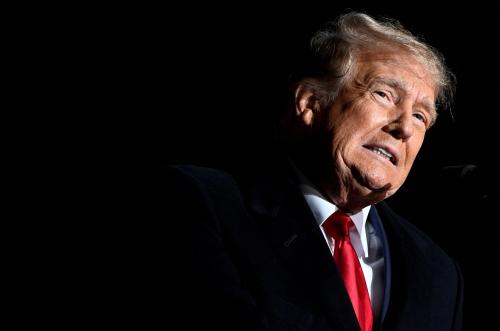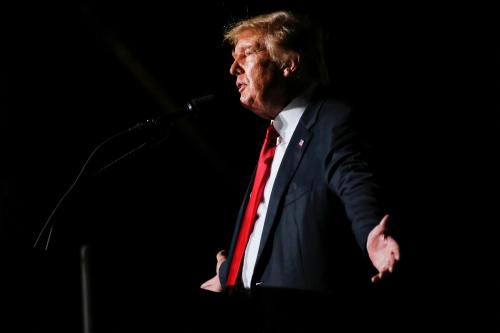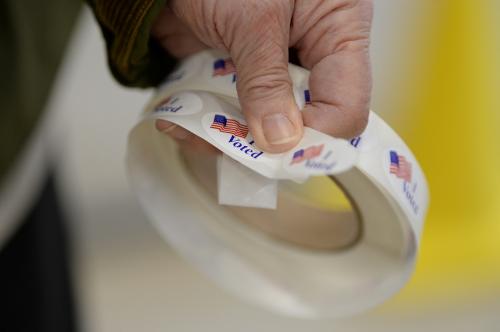This is Part 3 in our End of Trump series in which we discuss how the recent setbacks Trump has experienced might affect his chances for a political comeback.
As others in this series and elsewhere have noted, former President Donald Trump is in trouble. He is probably weaker politically than he has been at any time since he won the 2016 Republican nomination. This might be good news for the country but is it good news for Democrats? I don’t think so.
Donald Trump is like a 10-car pileup on the side of the highway. We can’t stop looking at him. He has dominated news coverage since he came down that golden escalator in Trump Tower. The veteran journalist Marvin Kalb writes of his coverage: “Trump is known to raise TV ratings and increase newspaper subscriptions. Editors like that. Climate change stories tend to depress ratings and subscriptions. Editors don’t like that.”
For more than seven years, Trump has sucked all the air out of the media space, and climate change isn’t the only story that has gotten lost in the shuffle. Another one that received insufficient coverage is that there is still a “normal” Republican Party in waiting, and Democrats, who have had three substantial wins in recent years, (the 2018 midterms, the 2020 presidential and the 2022 Senate) may not do as well against a “Trumpless” party.
During the primaries, my team at Brookings conducted a review of every single Republican and Democratic candidate for Congress.[1] During the primaries a lot of attention was paid to candidates at all levels who were hungry for Trump’s endorsement. Even among those who failed to get his endorsement, a large number did their best to turn themselves into “mini-Trumps” mimicking his style, his positions on issues and declaring themselves MAGA and America First. And the fact that Trump-endorsed candidates did well in the primaries added to the mantra that the Republican Party was now “Trump’s Party.” However, it turns out that a “normal” Republican Party was lurking in the wings. Of the 1,397 GOP candidates in congressional primaries in 2022, 59% were not endorsed by Trump, made no mention of Trump on their websites or social media, and made no mention of MAGA or America First.
In the general election, non-Trump Republicans did very well. In fact, some Republican operatives have taken to calling them “normal” Republicans—the first time in many years studying politics that I’ve ever heard people refer to some of their candidates as “normal.” In Georgia, Brad Raffensperger, the Secretary of State who refused Trump’s request to find him the 11,780 votes that would allow him to win Georgia, sailed to a 10-point victory over his Democratic opponent, surviving the wrath of Trump. Raffensperger was backed up by Gov. Brian Kemp who certified Biden’s win in the state. As a result, Kemp became enemy number one in Trump’s post-election vendettas. Kemp beat a Trump-backed candidate in the Republican primary, and in the general election, he won a 7.5% victory over the powerful Stacey Abrams whose campaign to end voter suppression made her a national celebrity.
In Nevada, the Republican candidate, Joe Lombardo, beat the incumbent Democratic Governor by 1.4%. Although Lombardo had Trump’s endorsement, he pushed away from him in the one gubernatorial debate saying, “he was bothered by Trump’s false claims of a stolen election, [and] he was “not shying away from that” and agreeing that Trump lying about election fraud undermined the confidence of the voters.”
Not surprisingly, Trump threatened to withdraw his support, but Lombardo won anyways. By contrast, the Trump-embracing Senate candidate in Nevada, Adam Laxalt, lost to incumbent Senator Catherine Cortez Masto by 1.9%.
One of the most “normal” Republicans around is New Hampshire Governor Chris Sununu who is extremely popular in the state. Gov. Sununu called Trump’s claims that the election was rigged “misinformed” and said that some people convicted of participating in the January 6 riots should not be pardoned. Corey Lewandowski, a Trump operative who lives in New Hampshire boasted of trying to primary him, which didn’t work. In the end and in spite of having called Trump “f—— crazy,” (or perhaps because of it) Sununu won his re-election with 57% of the vote while, at the same time, the Democratic Senator Maggie Hassan won reelection against a Trump-backed candidate with 53% of the vote.
In increasingly Republican Ohio, Republican Governor Mike DeWine had moved away from Trump during the pandemic, setting his own path for the state when it came to shutdowns and other pandemic-related issues. In November, he sailed to re-election with 63% of the vote in spite of the fact that he had dismissed Trump’s stolen election lie and had criticized him for having “poured gas on the fire” before the January 6 riot at the Capitol. The Trump-backed Senate candidate in Ohio also won but with ten percent less of the vote than DeWine got.
Had Trump not intervened in Republican primaries there would have been more “normal” Republicans on the ballot and the predictions of a red wave may have been more accurate. But the fascination (or obsession) with Trump has caused many to overlook the fact that there is a non-Trump Republican Party out there and it does pretty well. A return to a more normal Republican Party may be good for America but could pose a problem for some Democrats who need to build a stronger rationale for their party than “we’re not Trump.”
[1] See Brookings, The Primaries Project 2022 at https://www.brookings.edu/series/the-primaries-project-2022/







Commentary
Is this the end of Trump? Yes, but that’s not good news for Democrats.
December 15, 2022